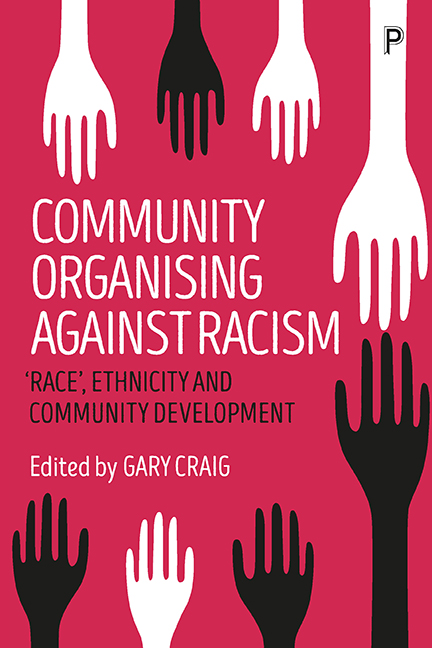Book contents
- Frontmatter
- Dedication
- Contents
- List of figures
- Author biographies
- List of abbreviations
- Introduction
- Section One Community development with ethnic minorities: history, theory, policy
- Section Two Building capacity with BME groups
- Section Three Working with Roma communities
- Section Four Global experience
- Section Five Working across cultural boundaries: ideological and personal reflections
- Afterword: Messages for community development in working with minority groups
- Index
Seventeen - Working with female migrant workers in Hong Kong
Published online by Cambridge University Press: 12 April 2022
- Frontmatter
- Dedication
- Contents
- List of figures
- Author biographies
- List of abbreviations
- Introduction
- Section One Community development with ethnic minorities: history, theory, policy
- Section Two Building capacity with BME groups
- Section Three Working with Roma communities
- Section Four Global experience
- Section Five Working across cultural boundaries: ideological and personal reflections
- Afterword: Messages for community development in working with minority groups
- Index
Summary
This chapter discusses how socio-political forces in Hong Kong shape the situation of new immigrants from mainland China, who are also Chinese but who differ in ethnicity and many aspects of culture, language and life experiences. An overview of responses from the community development field regarding ethnic and cultural diversity is provided to set the context of social services offered to new immigrants to Hong Kong from mainland China (People's Republic of China: PRC). To understand the perspectives and experiences related to this ethnic and cultural diversity, a small-scale qualitative study of community workers who work with these migrants was conducted in Tin Shui Wai North, a Hong Kong community with the second-highest proportion of migrants from the mainland. It is argued that ethnic diversities within the same race (Chinese) are characterised by a complex range of factors, including gender and class, and are emphasised by migration from a ‘developing’ (the PRC) to a ‘developed’ (Hong Kong) location. The ‘othering’ process is also at work through the social construction of new immigrants as different from Hongkongese. We further emphasise the need for community development workers to be self-reflexive when developing ethnic and culturally sensitive community practices that deal with the dimension of ‘difference’ of new immigrants.
The socio-political context of new immigrants from mainland China
Migrants from mainland China vary in their ethnic, urban or rural, educational and occupational backgrounds. Although the majority are of Han ethnicity, cultural differences can be observed between new arrivals and Hong Kong citizens who have experienced a greatly different economic, social and political environment during the past 60+ years (from 1949 onwards). Migrants from different parts of China speak a variety of dialects and many local studies have highlighted that language is a major barrier to social adjustment for new arrivals from outside the Guangdong province who do not speak Cantonese (HKFWS, 2000), as it is for migrants elsewhere in the world.
The daily quota of migrants from mainland China to Hong Kong was increased from 75 to 105 in 1993, and further to 150 in 1995, and this inflow has aroused increasing public attention. As a result, the number of registered immigrants within Hong Kong increased from 27,976 in 1990 to 61,179 in 1996.
- Type
- Chapter
- Information
- Community Organising against Racism'Race', Ethnicity and Community Development, pp. 277 - 290Publisher: Bristol University PressPrint publication year: 2017



